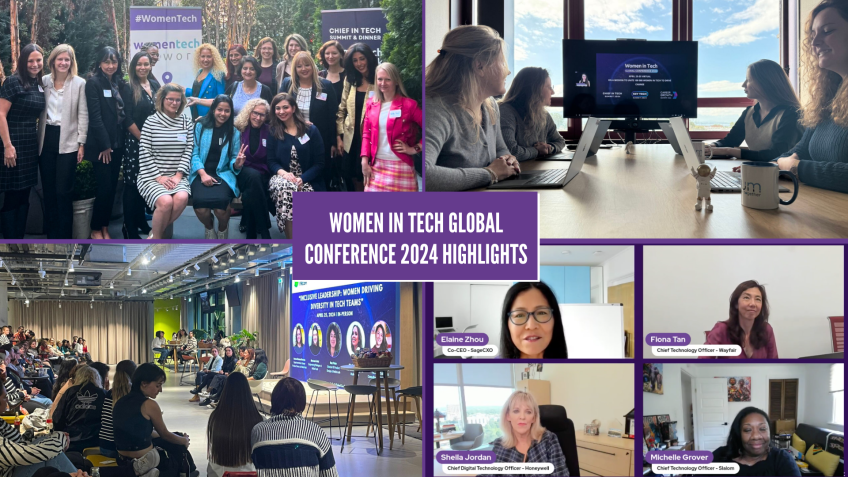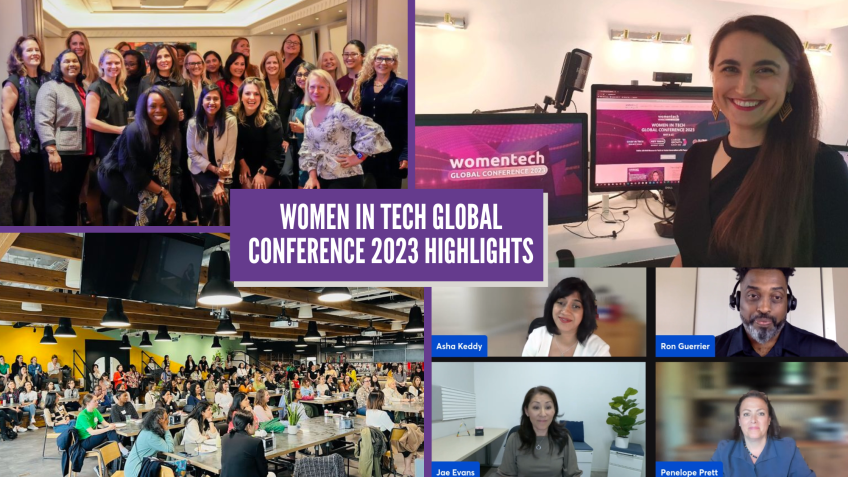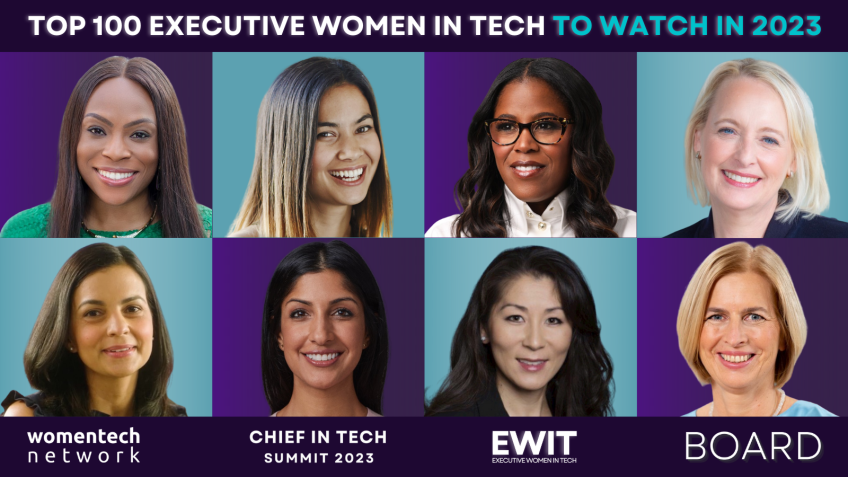
Organizations often kickstart their Diversity, Equity, and Inclusion journey with a one-off training session or perhaps worse - with lofty goals, without having a long-term vision for tangible progress and results. WomenTech Network sought out successful case studies from various organizations to assist businesses in starting up or bolstering Employee Resource Groups (ERGs).
What does a good Diversity & Inclusion strategy look like?
In essence: Creating a workplace climate that is inclusive and welcoming of all employees. This includes establishing clear policies, providing training on topics like unconscious bias, and developing specific management practices to evaluate performance fairly and equitably.
The Coca-Cola Company
One of the leading examples of a company successfully employing its DE&I strategy is The Coca-Cola Company. With the initiation of Coca-Cola Women in STEM (CWIS), The Coca-Cola Company strives to create an inclusive workplace, by providing leadership and educational opportunities for women around the globe. Through CWIS, they amplify awareness regarding IT possibilities within their company as well as throughout communities, enabling them to achieve success under the STEM umbrella.
As part of CWIS, Women in the EMEA IT community are devoted to creating a culture of inclusion and diverse representation through an expansive approach. In Q2 2020, they joined Global Women in Tech Community/Coding Girls and established their own local organization as part of the initiative to improve diversity within STEM fields, ultimately promoting it as a fundamental corporate value.
CWIS brings together the very best talents and thought leaders for an unforgettable experience of learning, networking, and motivation. Each event is carefully curated to provide professionals with tangible knowledge they can use to improve themselves further and take their careers even further.

“To foster genuine self-belief and inspire more women to enter the IT sector, we must promote constructive examples that demonstrate their power and leadership potential. Thankfully, by establishing a nurturing environment where females can support one another, I am confident that we will be able to successfully challenge age-old prejudices about what roles women are best suited for.”
Alexandra Shtetinska, HR Manager, SBP, EMEA IT at the Coca-Cola Company
Enbridge
Enbridge is another standout example of a company with a successful DE&I strategy. They have embraced the power of collaboration and constructed an environment that promotes inclusivity. They have done so by developing a plan centered around education and comprehension. Additionally, they remain devoted to core values such as respectfulness, tolerance, and justice which are fundamental components of their approach. Furthermore, Enbridge has set up different ERGs dedicated to various sensitive groups: ERG for caregivers, Ethnically Diverse Group of Employees, Females in Engineering, LGBTQ2S, Veteran and more.
Enbridge additionally shared three of their favorite DE&I initiatives:
- Co-founding COOL - Capgemini Organisation of Linguists. An initiative that encourages employees to be language teachers and learners within the workplace exchanging culture, linguistic fluency, and social events.
- ngGirls Madrid Student Ambassador - encourage more girls in non-STEM careers to enter tech. This included basic coding workshops and promoting the multitude of career paths within the industry.
- UCL Alumna work - a collaboration with my university (UCL) in recording podcasts and interviews documenting my experience transitioning from a Humanities degree to a technical career. Provided 1-to-1 mentorship, advice, and scheduling career events as a Social Officer for the School of European Languages and Culture Society (SELCS).

"To encourage diversity & inclusion is a core value of our organization and responsibility we share at all levels of the organization, including our management team and Board of Directors. Our people and employee resource groups are helping us to form strategies and programs that will continue to move us forward in making us an even better company.”
Al Monaco, President and CEO at Enbridge
Qualtrics
Qualtrics takes a data-driven approach to its Diversity & Inclusion initiatives. They implemented a ‘People Analytics’ program which allows them to track and analyze employee engagement across various demographics in order to identify areas of improvement and foster tangible progress. Additionally, they have launched their ‘Qualtrics Women in Tech’ and ‘Qualtrics LGBTQ+ Network’ initiatives, which work to cultivate a sense of belonging and provide meaningful support for members.
Qualtrics talent attraction team, US Early Career Talent, focused their efforts on taking a strategic, multi-pronged approach to building a diverse pool of candidates to start in 2023. This team made sure to identify and nurture a diverse pool of qualified talent. Through the utilization of Greenhouse Inclusion, they were able to closely monitor trends in their candidate pipeline, responding quickly if any downtrends occurred by actively reaching out to candidates through multiple sources. This strategy enabled them to hire 80 recruits for 2023 - 51% women and 17% URMs (underrepresented minorities).

"Creating an Inclusive culture where our employees feel like they belong is essential. We have continued to invest in employee resource groups and build competencies relative to Inclusive Leadership. We are also taking action to understand and close gaps in our employee levels of Inclusion and Belonging and using our own employee experience technology to listen and drive action."
Farren Roper, Head of Diversity, Equity and Inclusion at Qualtrics
Key Components of a Successful Diversity, Equity and Inclusion Action Plan
- Commit to measurable goals in areas such as recruitment for increasing diversity, employee engagement and satisfaction, career progression opportunities for existing staff, and more.
- Establish internal feedback loops that allow employees to openly discuss challenges they face while also recognizing successes they have achieved.
- Develop and implement comprehensive policies that protect employees from discrimination, harassment, and other forms of mistreatment.
- Create incentives to encourage employees to contribute ideas, expertise, and solutions in support of the organization’s DE&I initiatives.
- Track progress towards goals on a regular basis and make adjustments as needed to ensure measurable results.
- Utilize data from employee surveys, exit interviews, and other feedback loops to gain a better understanding of the needs of diverse employees, measure progress toward goals and make improvements where necessary.
- Leverage external partners or consultants to provide unbiased advice on how to improve DE&I initiatives
We hope these examples of successful DE&I initiatives have inspired you to create your own plan that is tailored to the unique culture and needs of your organization. With dedication, commitment, and perseverance, you can build an inclusive workplace that values diversity and respects all employees for their individual talents and contributions.
If you still don't have an ERG but wish to initiate one, please check out ways to get involved here.












